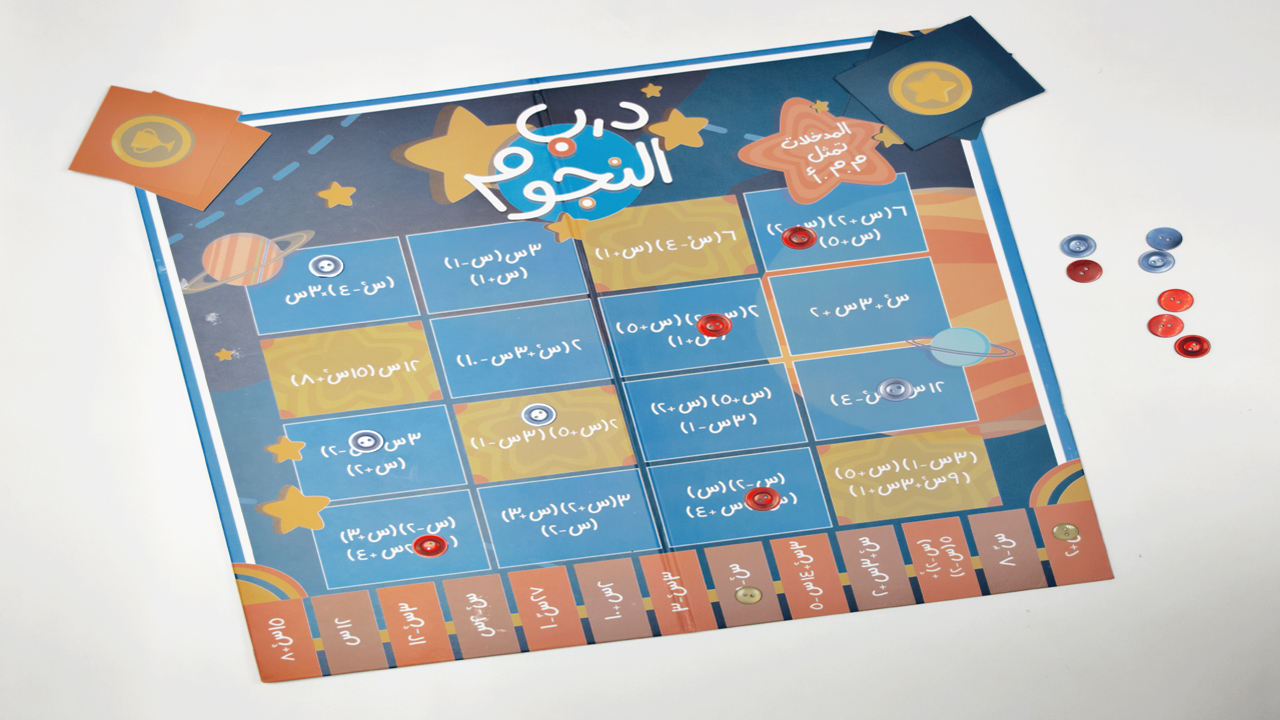Students and teachers in Jordan struggle in learning and teaching mathematics respectively. On one hand, content heavy mathematics curricula leave teachers with no time or flexibility to carry out activities, or even focus on students’ needs. Very few Math teachers in Jordan implement student-centred active learning and teaching in their classrooms (NCHRD, 2014). On the other hand, students struggle to understand math concepts, and believe that mathematics is a skill you are either born with or not[1]. These challenges cause students in Jordan to achieve low scores in standardised mathematics assessments. Two-thirds of ninth grade students are achieving below the low benchmark in the PISA Math assessment.
Improving students’ numeracy and socio-emotional learning outcomes are at the forefront of the Queen Rania Foundation’s (QRF) objectives to advance Jordan’s education system. In order to tackle these issues, QRF developed a “game-based learning” pilot. The pilot aimed to integrate games in the delivery of the curriculum content, in order to make the learning process more engaging. Prior to the pilot implementation, teachers were trained on how to use the games in the classroom. The program was implemented in 20 schools targeting 9th grade students, with a treatment sample size of 1,040 students. The program aimed to improve students’ performance in mathematics, their social-emotional skills, and improve teachers’ effectiveness.
The program was evaluated using a mixed-methods approach, including ordinary least squares regression for the baseline findings, followed by mid-line and end-line qualitative focus groups. The evaluation focused on testing the program’s theory of change (ToC) and whether the ToC held when it came to implementation in the classroom.
The results show that the gamification pilot affected the classroom environment positively through introducing new tools for teachers to support their students. The games enabled teachers to break the ice with their students. While the students enjoyed the constructive competition, the games added to the classroom, group work activities were a great addition to students’ experience in the classroom.
Nevertheless, the program did not show any rigorous improvement on students’ performance and teachers’ effectiveness in a direct way, due to some challenges with implementation. The program was heavily dependent on providing support to the teachers by the principal and official supervisors. When this support was not provided as needed, teachers perceived the program as a liability rather than an opportunity. Students enjoyed playing the games, but were not motivated to put their maximum effort in supporting their teams due to the lack of valuable incentives for the winners. The training succeeded in equipping the teachers with the needed skills to use the games, but it did not focus on other educational development areas such as growth mind-set and critical thinking.
Gamification is an emerging area in educational interventions. The concept itself is very promising and can be improved through further development using evidence-based research. The evaluation findings were very insightful and produced a number of critical recommendations. First, while designing the program, the organization should carefully consider the context of the educational system. The existing challenges in the classroom such as content heavy curriculum, and teachers’ urge to complete the whole curriculum should be considered. The pilot might be more effective if the games were shorter and embedded in the teachers’ teaching guides. Second, incentives must be designed to be given to the winning team; not individuals. This will motivate the students to work as one team and to support the low performing students. Third, teachers should have a certain level of flexibility in applying the games, with no high dependency on support from the implementation team or the official supervisors. Fourth, the training should include an explicit module on major social-emotional educational domains such as growth mind-sets and critical thinking. Fifth, it is highly recommended to include principals and supervisors in the training. Their inclusion would guarantee the needed level of institutional support for the implementation of the pilot. Finally, games should be designed in an adaptive way that allows for the variation in students’ mathematical skills.
This pilot shed light on a cost-effective and interactive intervention that can help teachers in delivering lessons effectively, and that can engage and interest the students in mathematics. The evaluation findings contributed heavily to the evidence-based decision-making approach at the foundation. The concept of gamification has great potential in improving the education system on a larger scale but a human centred design approach is critical for success.
[1] Findings from Queen Rania Foundation focus groups for 9th grade students in public schools
